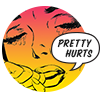
This week, the Cut explores women’s complicated relationship to beauty standards and the effort required to meet them.
At my last laser-hair-removal appointment, I tried to convince my aesthetician that the bush was back. She was confused enough to think I was talking about the return of George W. Bush as a dog portraitist. “Well, trends down here may come and go,” she said, gesturing. “But they never change up there.” She pointed to my upper lip. She might as well have been pointing to my chin also, because a lady beard is never on-trend.
There are many ways to furtively remove your chin hairs: tweezing, waxing, laser — even shaving. The Cut spoke to several dermatologists about why they have that pesky habit of showing up when you least expect it.
1. New chin-hair growth can appear as mysteriously and suddenly as Solange’s wedding.
It can literally sprout overnight. Dr. Elizabeth Tanzi of the Washington Institute of Dermatologic Laser Surgery explains that when you are younger, chin hair can grow as a result of a hormonal imbalance. When you are older, it’s due to a lack of estrogen. New York dermatologist Dr. Carlos Charles also cites genetics as a reason for chin hair. If your mom has chin hair, you most likely will, too.
2. Wax, thread, and depilate depending upon your skin’s sensitivity.
Here’s how it goes in terms of abrasiveness: Depilatory creams are less abrasive than threading, which is less abrasive than waxing. But, as Dr. Tanzi explains, with waxing, threading, and depilation, “if you have sensitive skin, you’ll be red and bumpy no matter what.” Threading rips out hair at the root, while waxing is highly irritating to sensitive skin as it also tugs at the surrounding skin. Depilatory creams may seem like a less irritating option, but they are strong chemical creams that dissolve hair bonds.
3. Lasers are the most expensive, yet slightly painful option.
Painful and expensive, laser treatment is the most long-lasting option for hair removal — and an investment of Céline-bag proportions. Dr. Tanzi explains that lasers work by concentrating on the color in the root of the hair, which is why they tend to work better on people with thicker, darker hair. By heating it, the laser kills the hair follicle. It can take three to five sessions to see long-lasting results.
Contrary to what the internet may tell you, lasers can be an option for all skin tones. But as Dr. Carlos Charles explains, using an incorrect laser wavelength or technique can cause heat damage, which damages the skin surrounding hair follicles. “Specifically in darker skin tones, any trauma to the surrounding skin can lead to hyperpigmentation and sometimes scarring, including keloids.” Beware of LivingSocial laser-hair-removal deals and choose your doctor carefully.
4. Doctors say it’s okay to shave your face (really).
Shaving your face can make it glow, but dermatologists also consider this to be the ultimate option for providing skin with the least amount of trauma. Dr. Charles says: “When performed correctly, shaving leads to the least amount of trauma to the skin surrounding the hair.” As for the theory that shaving makes your hair grow back faster, Dr. Tanzi asserts it is a myth. “It doesn’t affect hair growth at all. Your hair grows same amount. It just feels stubbly. Your hair naturally has a soft and wispy end. But if you shave it, it comes back as a blunt end, feeling thicker. It grows at the same rate and thickness.”
For those who want to avoid a close shave, Dr. Tanzi also suggests taking cuticle scissors and trimming hair close to the skin. It seems that there are only so many ways to trim a bush.






